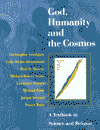Neo-Thomist Views of Divine Action
The best way to
compare theories of divine action in detail is to ask - what, for each theory,
is ‘the causal joint’ at which God - as a transcendent, immaterial world cause
- interacts particularly with causative factors in the material world?
Neo-Thomists speak of
‘double agency’, a concept developed by Aquinas and rearticulated in recent
theology in particular by Austin Farrer. God is the primary cause of all that is; in effecting the divine purposes God
works always through secondary causes, through the laws of the universe and the
activities of human agents. Our experience of God’s activity is always
mediated. God is the primary cause of all that is; in effecting the divine purposes God
works always through secondary causes, through the laws of the universe and the
activities of human agents. Our experience of God’s activity is always
mediated.
God can work through
these secondary causes to bring about particular results. But for the
neo-Thomist it is quite impossible to give an account of the causal joint,
because
-
divine causation differs from any
other kind - we should not expect to be able to characterise it within our own
terms
-
we have no ‘pure-secondary causes’ to
look at - everything is informed by divine causation. We have no ‘control
experiment’ by reference to which we might characterise the added causal
ingredient of the divine.
Anyone giving an account of divine action
must respect these two points. But double agency has been much criticised, not least because of the difficulty in offering any satisfactory analogy which
would illustrate it. not least because of the difficulty in offering any satisfactory analogy which
would illustrate it.
What is clear from Kathryn Tanner’s careful
piecing-together of the ‘rules’ for this sort of discourse is that double agency cannot be abstracted from the intricate Thomistic
reasoning from which it arose. It thus profits from the strengths of that
system and suffers from its weaknesses. One of the latter relates to God and
time. is that double agency cannot be abstracted from the intricate Thomistic
reasoning from which it arose. It thus profits from the strengths of that
system and suffers from its weaknesses. One of the latter relates to God and
time. Any system based on the Augustinian-Thomist conception that God gave rise to
the whole time-span of creation in the ‘moment’ of its divine inception runs
into great difficulty in describing real freedom in other agents with whom God
might enter into relation. Any system based on the Augustinian-Thomist conception that God gave rise to
the whole time-span of creation in the ‘moment’ of its divine inception runs
into great difficulty in describing real freedom in other agents with whom God
might enter into relation.
Email
link | Feedback | Contributed by: Dr.
Christopher Southgate
Source: God, Humanity and the
Cosmos (T&T Clark, 1999)
|




